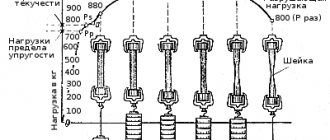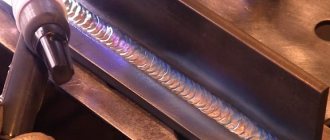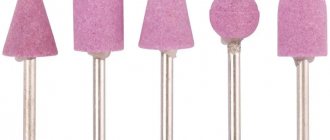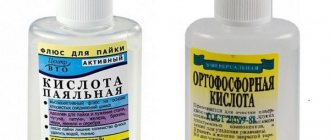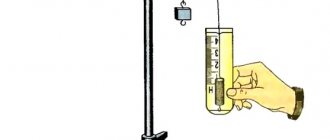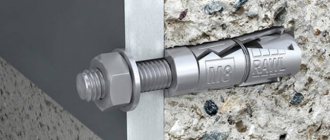For every moonshiner, it is a matter of prestige to produce a quality product . And here it is very important how many degrees the moonshine should be and how to determine this at home?
For reference! In our country, a distillate with a temperature of 45–55° is considered to be good homemade strong alcohol.
But in Europe, for example, you can rarely find such an indicator; there a drink that does not exceed 40° is considered normal, most often around 38°.
But we’ll talk about how to determine whether your product meets national standards.
Moonshine how many degrees - determine with an alcohol meter
In order to determine the strength of alcohol-containing drinks, there is a simple and accessible device for everyone - an alcohol meter . Having it, you can always find out what kind of distillate you got. It's not difficult at all, all you need to do is:
- Cool the moonshine to 20°C. This is an important indicator, since the accuracy of the readings depends on it.
- Pour the liquid into a long transparent container. If you have it in an almost full jar, you don’t have to pour it anywhere.
- Carefully lower the alcohol meter into the liquid and see how much it “hangs” in it, and at what point on the scale the liquid level is.
Note! A moonshine brewer doesn’t always have the patience to cool the resulting product; he wants to know the strength right away, while it’s still warm. This is possible, but an adjustment needs to be made.
The best assistant in this is a moonshine calculator, which you can either download to your computer (smartphone) or use online .
An alcohol meter today is not a scarce device, and it is inexpensive, so every moonshiner can buy it. You can even have not one, but a couple, since it is easy to break, because it is made of glass. However, anyone may find themselves in a situation where they do not have an alcohol meter at hand.
DIY alcohol meter
To buy it, you either need to go to the city and search there, or order it online and wait several days for delivery. We offer a simple diagram for making your own alcohol meter.
You will need:
- two flasks, and in the absence of such, two transparent tubes (for example, from used ballpoint pens). You can also use two pieces of silicone tubes;
- store-bought vodka (not burnt!), the strength of which is the well-known 40°;
- pure medical alcohol, the well-known strength of which is 97°. As a last resort, you can take an alcohol preparation (for example, camphor or salicylic alcohol). Its strength is 70°, as written on the bottle label. That is, in this case you will not be able to accurately determine the degree above 70°, but you will know that it is higher. Moonshine rarely has more than 55°;
- adhesive tape (duct tape) or rubber band;
- marker or nail polish;
- a small piece of lead or a metal ball (weight);
- plugs for sealing the lower ends of the tubes.
First, two tubes (flasks) are connected to each other using tape, and the bottoms are insulated.
A weight is placed in one of them. The device is ready, all that remains is to make the scale. First, it is lowered into vodka and a mark is made at the place to which the tubes have dropped. Clearly, this is 40°.
Then they are dipped in alcohol, and the second mark is made in the same way (70 or 97°). And between the two marks other readings are calculated. You can, however, not draw lines; the definition will still be “strictly by eye,” that is, approximate.
Attention! This device cannot claim to be a real alcohol meter, since it can produce serious errors.
But if you don’t need precise indicators, this will do. At least you won’t lower the degree of distilled moonshine below 40°! However, if possible, buy a real device.
See also: Equipment and accessories for home brewing
Effective burning of alcohol when preparing cocktails
Fiery cocktails have been in fashion for a long time. Preparing and drinking burning drinks is a fascinating spectacle and gives indescribable sensations.
It was noticed that during the combustion process:
- the taste and aroma of the cocktail improves;
- the temperature of the drink increases;
- The mood of partygoers increases.
Fire cocktails, like any other, contain several components. And only one, or less often two of them are flammable. To prepare such cocktails, experts advise using drinks with a temperature of 40 degrees or higher as a basis. The higher the degree, the more spectacular the spectacle will be. You can use less strong ingredients, but then they must contain sugar.
When creating such cocktails yourself, it is important to provide safety measures in advance and strictly follow them.
If you doubt the properties of the purchased drink and know the characteristics of the combustion of alcohol, it is worth conducting a simple experiment. Conducting an experiment is not only an exciting activity, but also confidence in the safety and quality of the product.
At what degrees does moonshine burn?
Let's talk about a method that is well known to everyone who distilled moonshine back in the days of Gorbachev's Prohibition Law. It is based on the fact that all alcohol whose strength is above 20° burns . And in different ways. The check is done in several ways:
1. Take moonshine with a pipette and drop it into a spoon, counting. For example - 10 drops. Then they set it on fire, and when it goes out, count the drops again. If there are 5 drops left, the strength is about 50° , 6 – 40°, etc.
2. A more reliable method than the previous one, since it has been tested by many generations. Scoop moonshine into a spoon and set it on fire, taking into account the following factors:
- the contents of the spoon burn out almost completely, and the color of the flame is blue. In liquid 80° or more ;
- In the flame, reddish notes appear against the blue background (as sometimes in the burners of our gas stoves), and a certain amount of water remains in the spoon. The strength is even higher than 60° ;
- the flame is red, does not burn for long, the water remains half of the original volume or more. Supposedly it's degrees 40;
- It burns as long as you hold the match over the spoon - about 30° .
- flashes, but immediately goes out - at a level of 20° . This is already a fortress of tails ; they need to be collected separately or not collected at all. The maximum that moonshine tails are capable of is to be added to the mash to increase its alcohol content .
More on the topic: Why do you need to separate the heads, body and tails in moonshine?
Useful videos
Look at the video below on how to make an alcohol meter with your own hands, for this you only need two syringes, glue, a dropper, plaster and a lid, look:
Since the times of the USSR, many of our citizens have become accustomed to checking the quality of vodka and moonshine by setting it on fire. Indeed, good vodka should burn. But to properly check the drink you need to know some features, otherwise even the highest quality product will seem like a fake.
First, a little school chemistry. Theoretically, vodka consists of only two components: alcohol and water. But in practice, the composition will necessarily contain foreign impurities (fusel oils, ethers, etc.), their concentration depends on the degree of purification. Water and impurities do not burn.
When set on fire, not all the vodka burns, but only the alcohol vapor. The higher the alcohol concentration, the more intense the combustion will be. But before lighting, the vodka must be warmed to room temperature so that the alcohol begins to evaporate. Another rule is to use a container with a large open surface, such as a lid, spoon or saucer. This will ensure a constant flow of oxygen.
Unlike gasoline, vodka does not ignite quickly. It burns with a light blue flame near the surface without generating much heat. The intensity of the flame and color saturation depend on the concentration of alcohol. If there is not enough of it, the fire will be barely noticeable and will quickly go out. You should also take into account the presence of other substances in the recipe that can block the evaporation of alcohol, preventing combustion.
It has been practically established that vodka begins to burn if it contains more than 30 degrees of alcohol. But a normal flame can only be seen in a drink whose strength is above 40 degrees.
Attention! A green flame indicates methyl alcohol; drinking such liquid is deadly.
You can distinguish good vodka from a fake in the following way: pour a little of the drink in question into a saucer or spoon, heat it to 20-30°C, and light it with a match. If there is no flame, this is a sign of poor quality.
When a fire appears, you need to wait until it goes out. Next, the remaining liquid is examined. It should be transparent and not have a strong unpleasant odor. Only water should remain. If an oily liquid has formed at the bottom, you have foreign impurities, the fewer of them, the better.
Not only vodka burns, but also other strong alcoholic drinks, such as cognac, whiskey, sambuca and absinthe. But ignition is ineffective for checking their quality. The fact is that due to the complex composition of these drinks, their combustion products cannot be analyzed at home. The remaining liquid is always cloudy and smells unpleasant.
It is impossible to give a definite answer to the question of how many degrees there are in moonshine. Indicators may differ depending on the production technology, the presence of the first and last jets in the drink, the duration of evaporation and the equipment used. After preparing moonshine, a person can independently reduce the strength by diluting it.
We determine the strength depending on the temperature in the cube
Most industrial stills are equipped with a thermometer, which is used to monitor the heating temperature of the mash . If you know something about temperature indicators, you can determine when the first drops will begin to drip, when you can finish selecting the “heads” and to what level the “body” should be driven.
- At 88 - 89°C, the alcohol begins to evaporate, that is, a trickle of alcohol is about to flow. As soon as you notice the first drops in the tube attached to the coil (transparent silicone tubes are most often used now), turn down the heat or switch the stove to a lower mode; you should not sharply heat the mash any further, otherwise foam may erupt.
- Select the tails (this is approximately 10% of the expected amount of moonshine) and begin to distill the main part (the body). When you see that the thermometer needle has reached the number 95, it means that the strength of the outgoing liquid is now in the region 40°.
- The arrow moves further, and somewhere at 97°C you need to remove the jar with the main distillate and either take away the tails until the temperature rises to 98°C, or stop distilling .
Important. Do not forget about the possible errors of thermometers.
Having analyzed the coincidence of the temperature in the cube and the strength of the distillate several times, you will know exactly how many degrees the liquid has that is currently flowing into the jar you placed.
Temperature adjustment to soften flavor
When the taste of moonshine does not suit the distiller, it can be softened with the help of sweeteners or acidifiers (honey, sucrose, dextrose, food glycerin, ascorbic acid, etc.).
At the first stage, a test portion is made. 100 ml of distillate is poured into the container. A minimal amount of flavor softener is added to it. After stirring, let it sit for 5–10 minutes and begin tasting.
If the result is unsatisfactory, add the next portion of sweetener/acidulant. This procedure is carried out until the drink acquires optimal taste.
When adding a softener, its mass or volume is recorded each time. At the end, all indicators are summed up (into 1 portion). The data obtained are applicable to 100 ml of distillate. They are taken into account when calculating the proportions for any volume of moonshine.
After softening, the container with alcohol is tightly closed and kept at low temperatures (+2...+4°C) for a week.
To taste - to what degree should I push it?
Even if you have an ordinary homemade device that does not have a thermometer, it is also possible to approximately determine the strength without an alcohol meter . However, here you cannot do without some experience in drinking strong alcohol. You just need to know what the degree “sounds” like in our body.
Moonshine brewing, in most cases, involves tasting the resulting product. That is, they taste it. Everyone knows approximately how much raw alcohol should be produced from a specific amount of mash (see: mash strength).
Usually they start tasting the moonshine at the exit (“in thimble-sized” doses) when the expected amount exceeds half. And by their own feelings they determine how strong the distillate is at this stage and how much more can be distilled for consumption (that is, before the “tails” begin to flow).
Usually the tasting method is supplemented with a combustion test .
We recommend: Everything about how to distill moonshine correctly at home
How to find out strength - visual method
Simply put, they look at what the liquid looks like. Transparency at the “tear-like” level is considered an indicator of good quality and strength.
Turbidity (read: why moonshine is cloudy) supposedly indicates a low degree. By the way, not a fact.
It is not recommended to use only this method without using others . The water is clear too!
Common mistakes
At the stage of diluting moonshine, inexperienced distillers often make mistakes that lead to a decrease in the quality of the homemade drink.
The most common violations are:
- Mixing utensils. The container is selected taking into account the volume of liquid after dilution.
- Purity. All utensils, utensils and hands used should not be dirty, because... this will affect the quality of the final product.
- Temperature conditions. At the time of dilution, the temperature of the water and moonshine should be the same. +20°C is considered optimal.
- Mixing sequence. It is necessary to pour moonshine into the water.
- Proportions. If you incorrectly calculate the ratio of water to alcohol, you will not be able to achieve the desired result the first time. It is recommended to dilute the mixture at a time.
- Quality of raw materials. Water for dilution must be soft, without admixtures of other substances, such as salts.
After dilution, it is not recommended to start drinking the drink. To balance the taste, the moonshine is allowed to stand for 3-4 days.
How to measure strength by weighing?
This check can only be carried out if you have electronic scales . First you need to weigh the container (or put it on the scale plate, turn it on, and it will show 0). Pour exactly 1 liter of moonshine into this container. A measuring cup will help you measure this amount, most of which cannot claim absolute accuracy. And look at the scale readings.
A liter of vodka with a strength of 40° weighs exactly 953 grams ! If it is less, the strength is higher (alcohol is lighter than water), the weight is greater - accordingly, the strength is lower. Yes, you’ve probably noticed yourself: when you pick up a three-liter jar of high-proof moonshine, you feel its unusual lightness.
It will be useful: Correct containers and storage conditions for homemade alcohol
